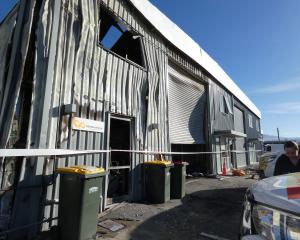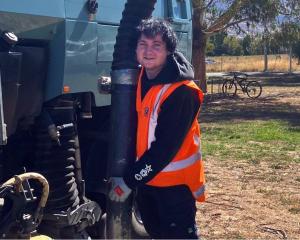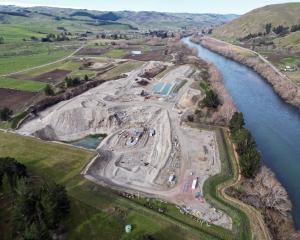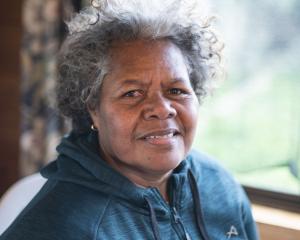
At Lammermoor Station, in Paerau Valley, you can almost smell the whisky on John and Suzie Elliot’s breath: they’re about to distil it from their organic barley and sell it globally.
It may be the world’s only fully processed, organic grain taken right through to bottling from a single farm.
"There would be very few whisky distilleries in the world where everything’s within an arm’s reach," Suzie Elliot said.
The southern Maniototo enterprise was No8-wire style, built on the "herb-tea mixer from 100 years ago" that they snaffled from a factory in Dunedin and an Italian Vallero drum originally designed for tanning hides.
The Vallero’s "concrete-mixer" action was critical to steeping in the malting process. In the field, barley takes weeks or even months to start germinating. If it is immersed in water three times, with air breaks in between, the grain can be tricked into germinating within days. The whisky-making follows from there.
The Elliots are proud of their DIY but far from haphazard: they’ve been mulling a whisky business for more than 30 years.
Whenever they travelled for work or pleasure, single malt whisky was on their mind. Neither drank much; they just loved the idea of reconstituting the whisky trade on the Lammermoors, an area full of the feel of Scotland.
Sly distilleries thrived in Central Otago more than 150 years ago as diggers reinvented favourite tipples. Honouring that Maniototo Plains history, the Elliots’ catch-phrase for Lammermoor Whisky is "Brewed illegally since 1863."
The Elliots were unsure how much they could expect to make in their first commercial run, but John hoped it would be about 10,000-12,000 bottles.
It felt like the right time to get going, Suzie said.
"The market’s just getting really excited because, worldwide, whisky is in huge demand."
Unlike in illicit whisky-making of old, the distillery on their 5200ha pastoral run was an approved bond store and customs-controlled area, meaning they paid excise tax, either here or in overseas markets. John, who admitted to a cash-conscious Scottish heritage, was hurt at the thought of it.
"If it’s exported we don’t pay tax but we’ll pay it in the country it goes to. One way or another, they’ve got you."
But one thing that nobody could take away from the Elliots was their location: an unusually wet bit of inland Otago with around 1000mm of rain annually. It could be cold and misty in winter, not unlike Scotland, but the soil baked enough in summer for the barley. They had spray irrigation but not the centre pivots found in other parts of southern Maniototo: for them, it was K-Line and a couple of guns.
"Often a squirt of water is all we need. It can be the difference between a good season and a bad season," John said.
Their 120ha of peat cropping country liked the extreme seasonal switches, yielding about 8-10 tonne a year of barley and 10-12 tonne of triticale. The same paddocks were often cropped several seasons in a row.
The farm had plenty of clean spring water for the distilling and the only imported element, for now, was malted barley from Gladfield Malt near Ashburton.
"The only outside thing that we ever need to buy is yeast."
The Elliots had built a "wee lounge room" on a mezzanine floor in the distillery.
"We have a little tasting room in the wings too. Things are a bit experimental; we’re jostling things round to see how it all works,’’ John said.
He hoped to have the distillery finished in February, ready for a possible public open day. Before long, the famously secluded area could have tourists trekking down the dead-end gravel road to the property.
"We’ve already had tour guides asking about it."
It was likely to be a small start but they would export from the outset, marketing and distributing through their farming contacts.
It would be a self-contained family operation, just like the existing livestock setup. They ran about 5000 ewes and 900 hoggets alongside Southdown and Romney studs, carried 2000 bulls and 200 breeding cows, reared 600 calves a year and leased bulls to dairy farmers throughout the South Island. Contractors did not see much business at Lammermoor; the Elliots preferred to keep their costs down by using their own kit. They carted stock in their own truck, did their own cultivating and hay-making and finished some of the stock on an irrigated, family-run 115ha finishing farm at Waipiata, near Ranfurly. The Elliots used distillers’ barley but were experimenting with different varieties. They were organic courtesy of their fertiliser mix, spreading about 3000 tonne a year of free-range chicken manure and lime to lift for added nutrients and organic bulk.
Suzie fed spent grain from the distillery to the calves, as well as eight saddleback pigs. Safe to say, at Lammermoor an opportunity is never wasted.
- Tim Fulton is an agribusiness writer.












